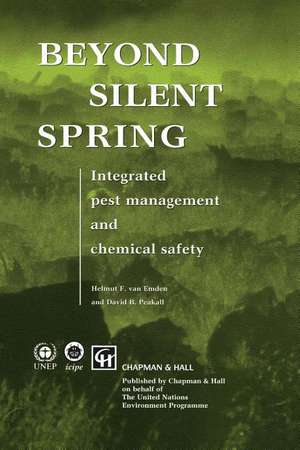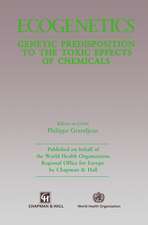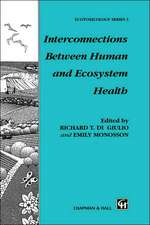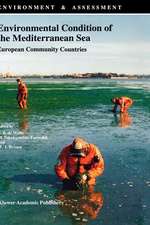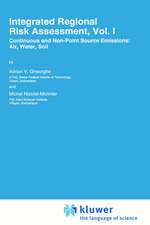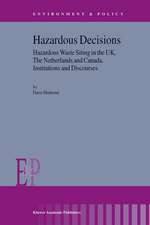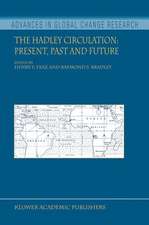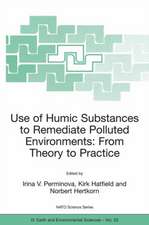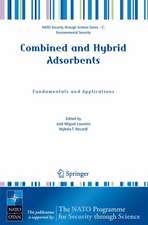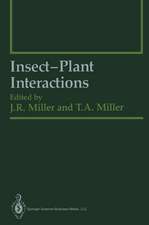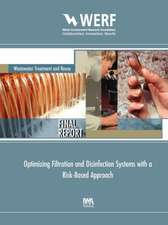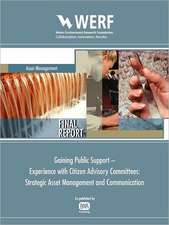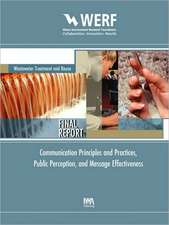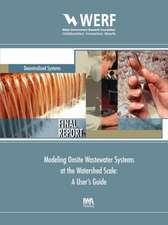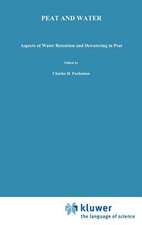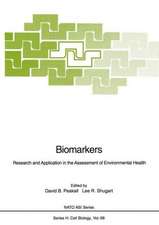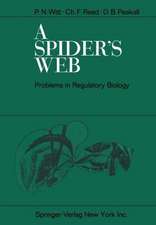Beyond Silent Spring: Integrated pest management and chemical safety
Autor H.F. van Emden, David B. Peakallen Limba Engleză Paperback – 30 iun 1996
| Toate formatele și edițiile | Preț | Express |
|---|---|---|
| Paperback (1) | 946.87 lei 43-57 zile | |
| SPRINGER NETHERLANDS – 30 iun 1996 | 946.87 lei 43-57 zile | |
| Hardback (1) | 952.89 lei 43-57 zile | |
| SPRINGER NETHERLANDS – 30 iun 1996 | 952.89 lei 43-57 zile |
Preț: 946.87 lei
Preț vechi: 1154.72 lei
-18% Nou
Puncte Express: 1420
Preț estimativ în valută:
181.21€ • 188.48$ • 149.60£
181.21€ • 188.48$ • 149.60£
Carte tipărită la comandă
Livrare economică 14-28 aprilie
Preluare comenzi: 021 569.72.76
Specificații
ISBN-13: 9780412728105
ISBN-10: 0412728109
Pagini: 320
Ilustrații: XVIII, 320 p.
Dimensiuni: 155 x 235 x 18 mm
Greutate: 0.49 kg
Ediția:Softcover reprint of the original 1st ed. 1996
Editura: SPRINGER NETHERLANDS
Colecția Springer
Locul publicării:Dordrecht, Netherlands
ISBN-10: 0412728109
Pagini: 320
Ilustrații: XVIII, 320 p.
Dimensiuni: 155 x 235 x 18 mm
Greutate: 0.49 kg
Ediția:Softcover reprint of the original 1st ed. 1996
Editura: SPRINGER NETHERLANDS
Colecția Springer
Locul publicării:Dordrecht, Netherlands
Public țintă
ResearchCuprins
1. Introduction.- References.- 2. The world of chemicals.- Classes of chemicals.- Chemicals associated with energy production.- Heavy metals.- Highly stable compounds of environmental concern.- Petroleum hydrocarbons.- Other high-volume chemicals.- Conclusions.- References.- 3. The integrated approach.- Integrated pest management.- Regulation of pesticide usage.- Regulation of nonpesticidal chemicals.- Waste disposal.- Life-cycle management of chemicals.- Conclusion.- References.- 4. Pressures on pesticides in IPM.- The evolution of concepts.- Factors influencing the changing role of pesticides in IPM.- Conclusions.- References.- 5. Principles of IPM.- Economic thresholds.- The integration of pesticides into IPM.- Insecticide application technique in relation to IPM.- Biological control.- Biodiversity in IPM.- Cultural control.- Semiochemicals.- Genetic controls.- Host-plant resistance.- Insect growth regulators (IGRs).- Putting it all together.- References.- 6. The practice of pest management in developing countries.- South and South-East Asia.- Africa.- South America.- Constraints in development and implementation of IPM in developing countries.- Conclusions.- References.- 7. Social and economic aspects of integrated pest management in developing countries.- Integration of IPM into agricultural and health systems.- Monitoring pest populations.- The high information and management requirement inherent in IPM.- Economic viability of IPM.- Institutional factors affecting IPM.- References.- 8. Hazard assessment of persistent chemicals in the environment.- Polychlorinated aromatic hydrocarbons.- Hazard assessment of complex mixtures.- Polluter pays?.- Economic and environmental costs of pesticides.- Reduction in pesticide usage.- Use of biomarkers in environmental assessment.- Control strategies for polyaromatic hydrocarbons.- Conclusion.- References.- 9. Nonpesticidal chemicals that have an impact on agriculture.- Acid rain.- Climate change.- References.- 10. The international approach to integrated pest management and life-cycle analysis of chemicals.- References.- 11. A look into the future.- References.
Recenzii
`The book is a splendid international overview of a problem of growing importance.'
International Journal of Environmental Statics
`Beyond Silent Spring gives an excellent review of IPM practices and of how pesticides can be integrated into IPM with minimum environmental risk. Ideas are also put forward for the better management of hazardous chemicals on an international level. Beyond Silent Spring is extremely well referenced with input from experts in a wide variety of disciplines. ... Beyond Silent Spring is a valuable text book in its own right. This book will be of interest to both academics and industrialists and also to anyone with an interest in environmental issues.'
Integrated Pest Management Reviews, 4 (1999)
International Journal of Environmental Statics
`Beyond Silent Spring gives an excellent review of IPM practices and of how pesticides can be integrated into IPM with minimum environmental risk. Ideas are also put forward for the better management of hazardous chemicals on an international level. Beyond Silent Spring is extremely well referenced with input from experts in a wide variety of disciplines. ... Beyond Silent Spring is a valuable text book in its own right. This book will be of interest to both academics and industrialists and also to anyone with an interest in environmental issues.'
Integrated Pest Management Reviews, 4 (1999)
